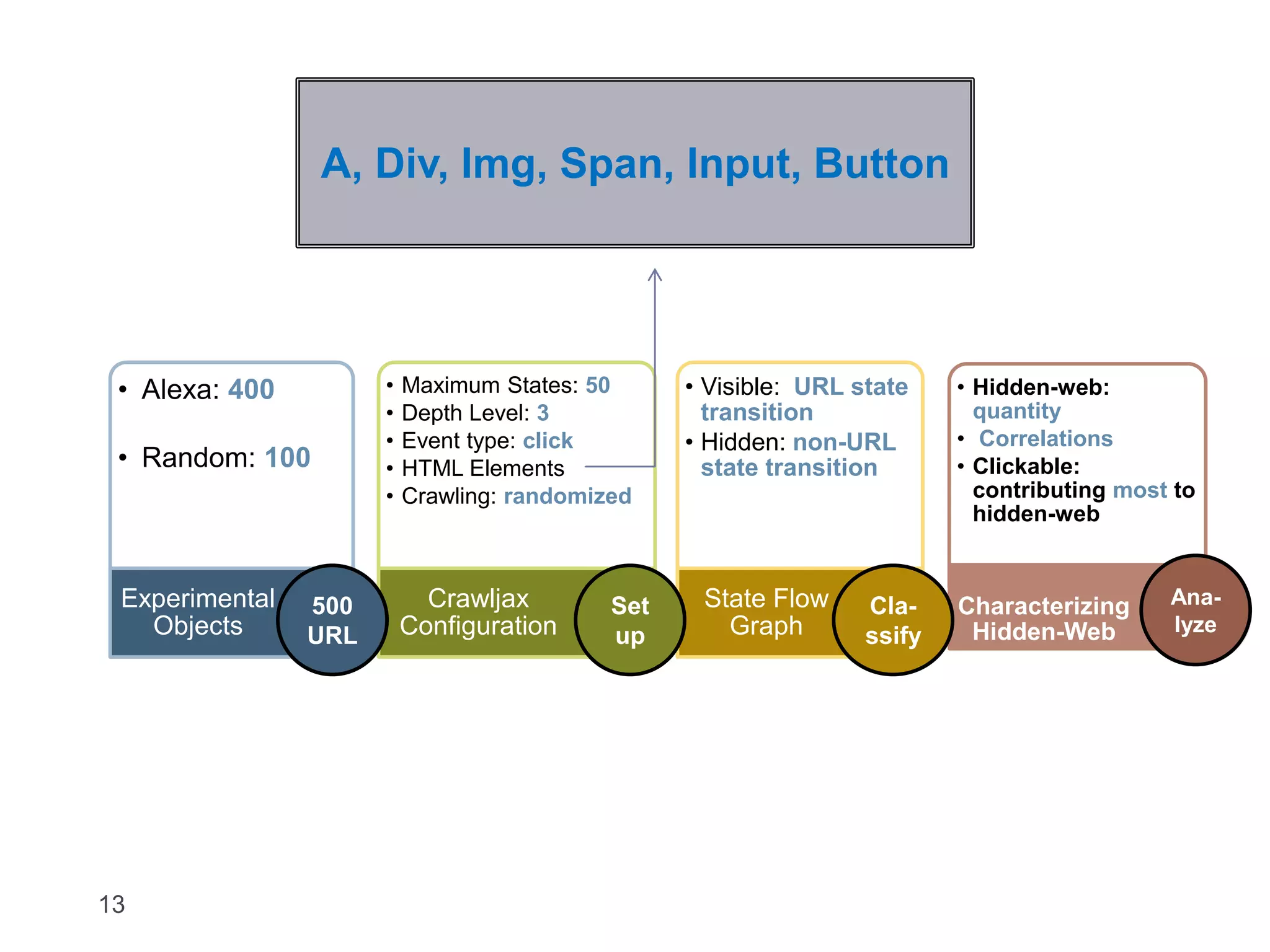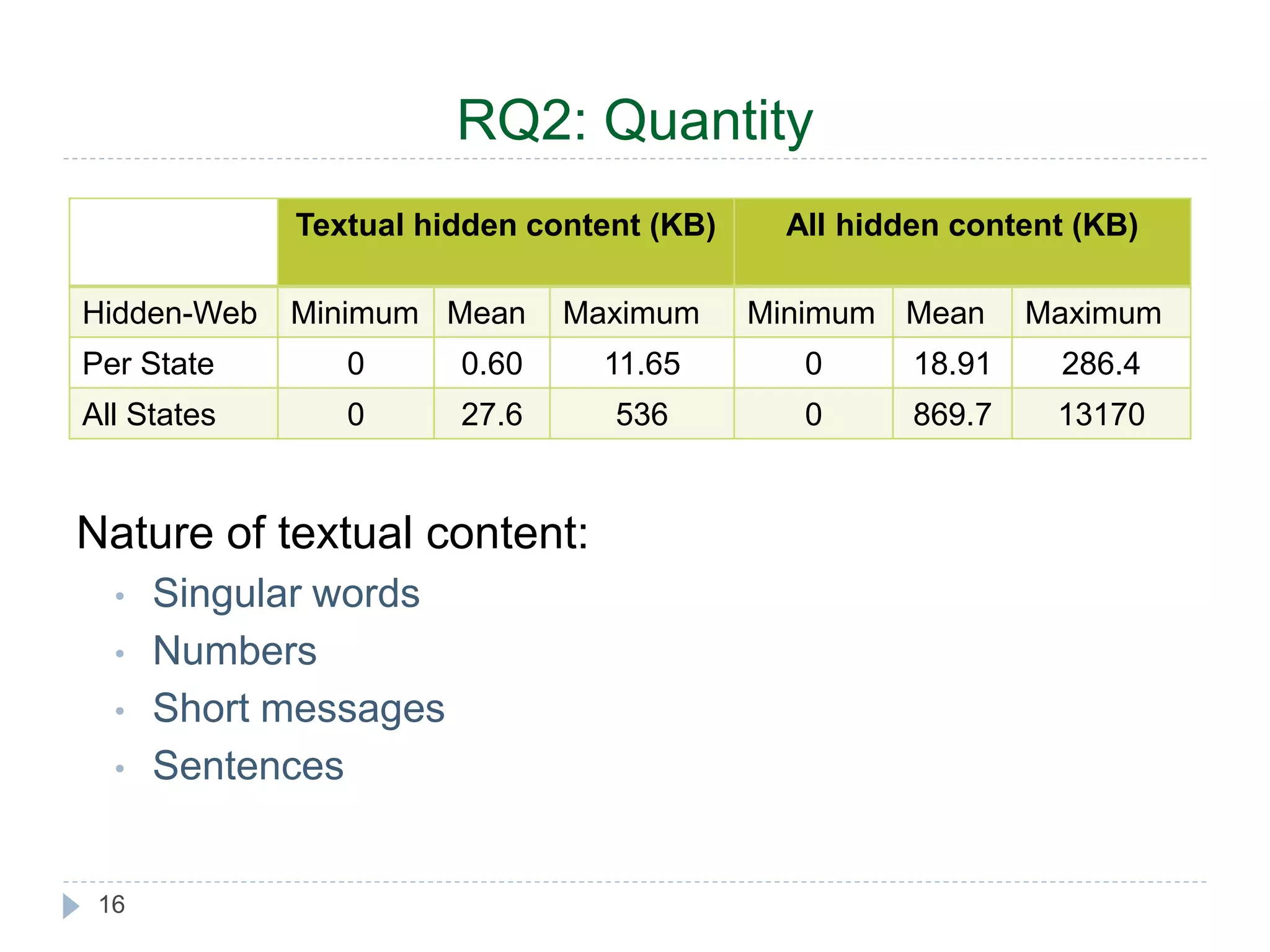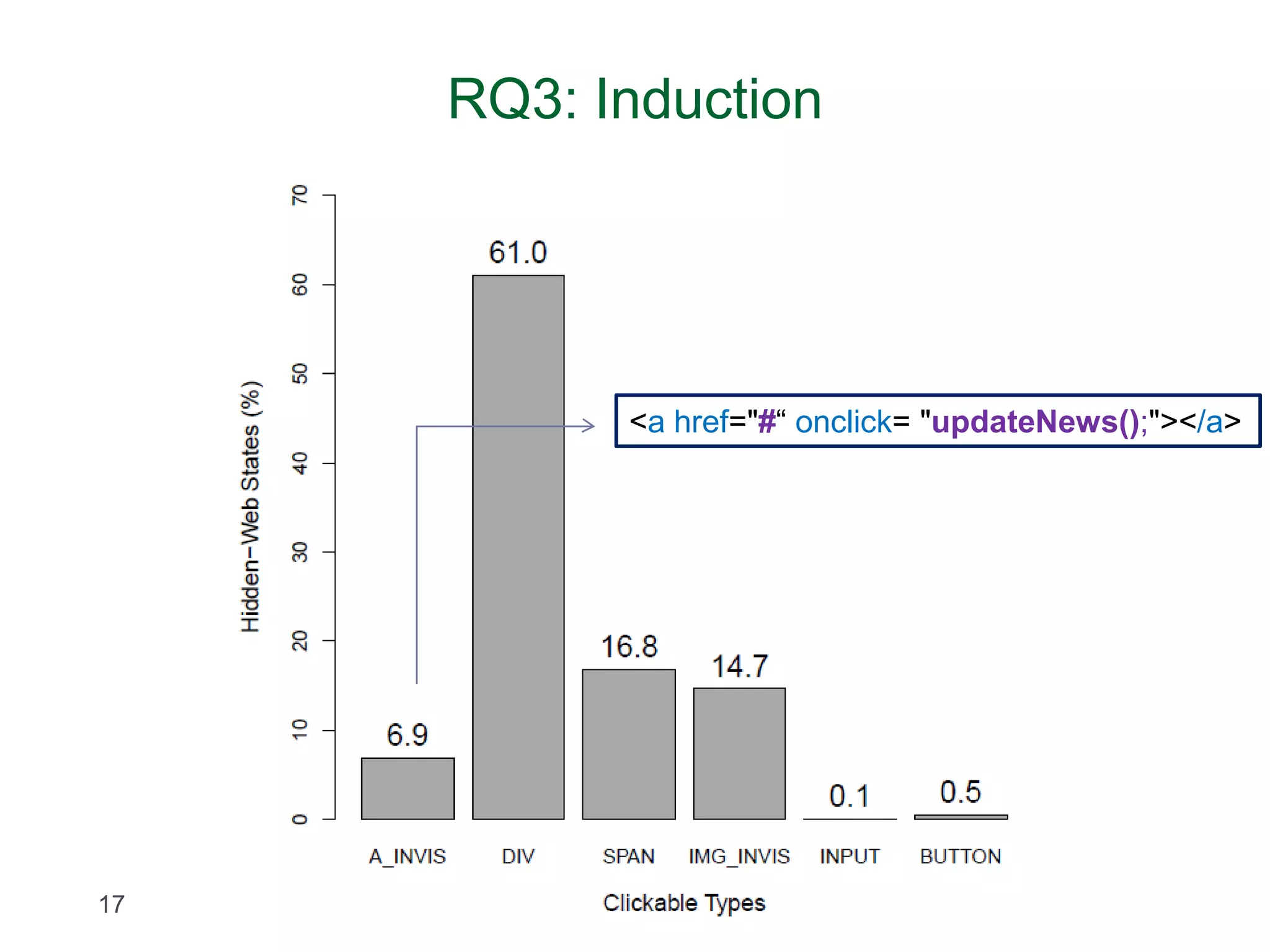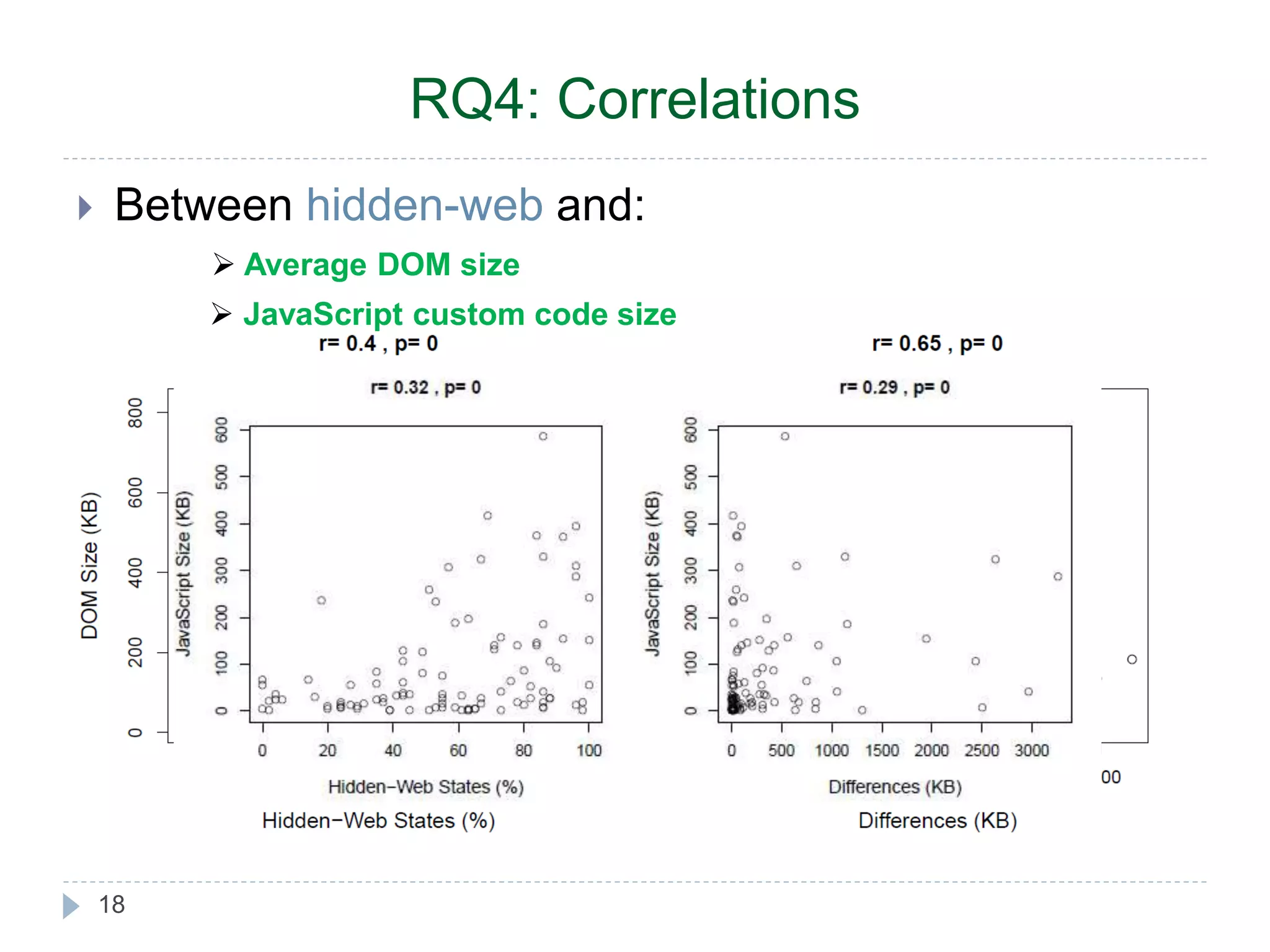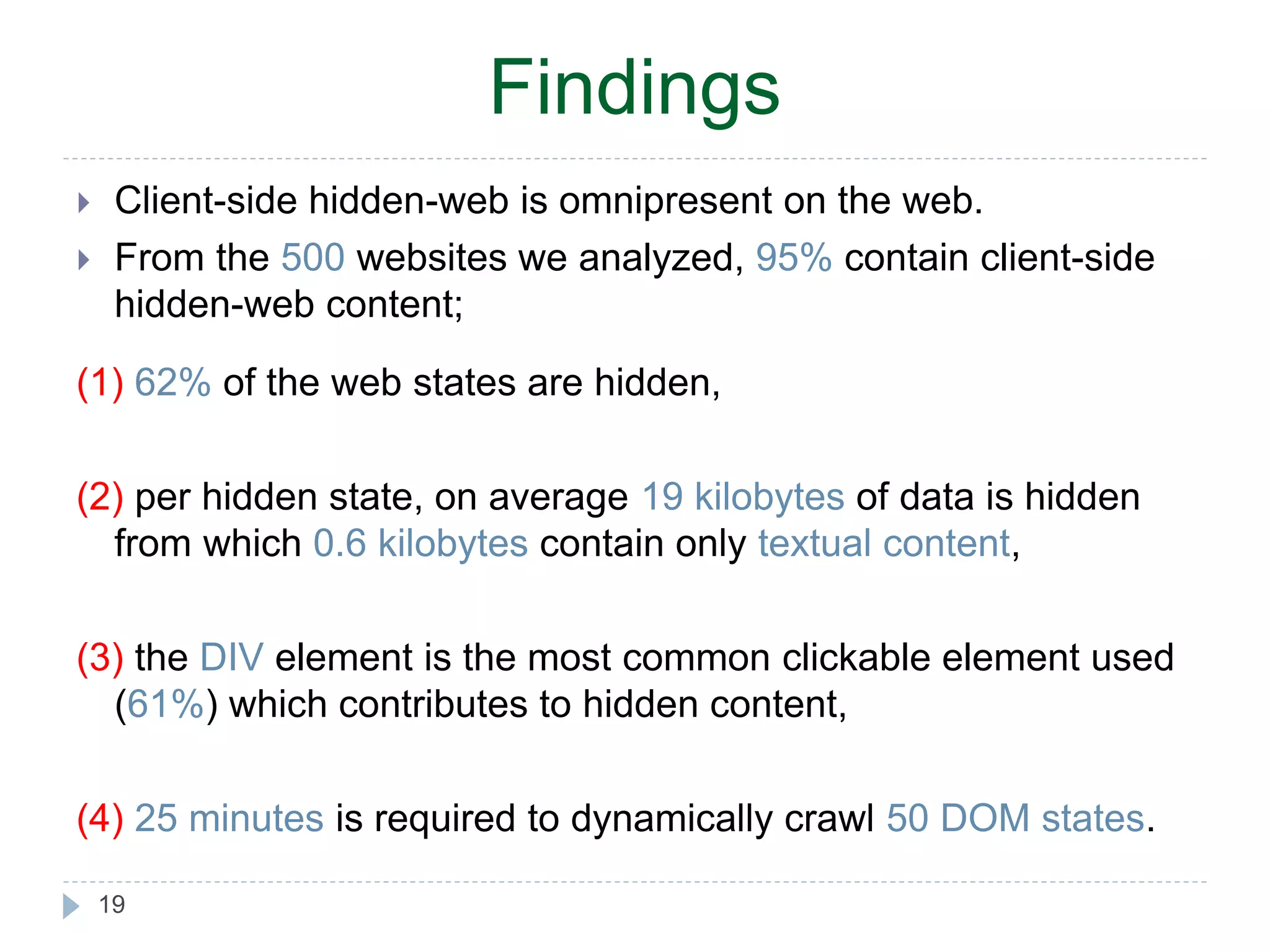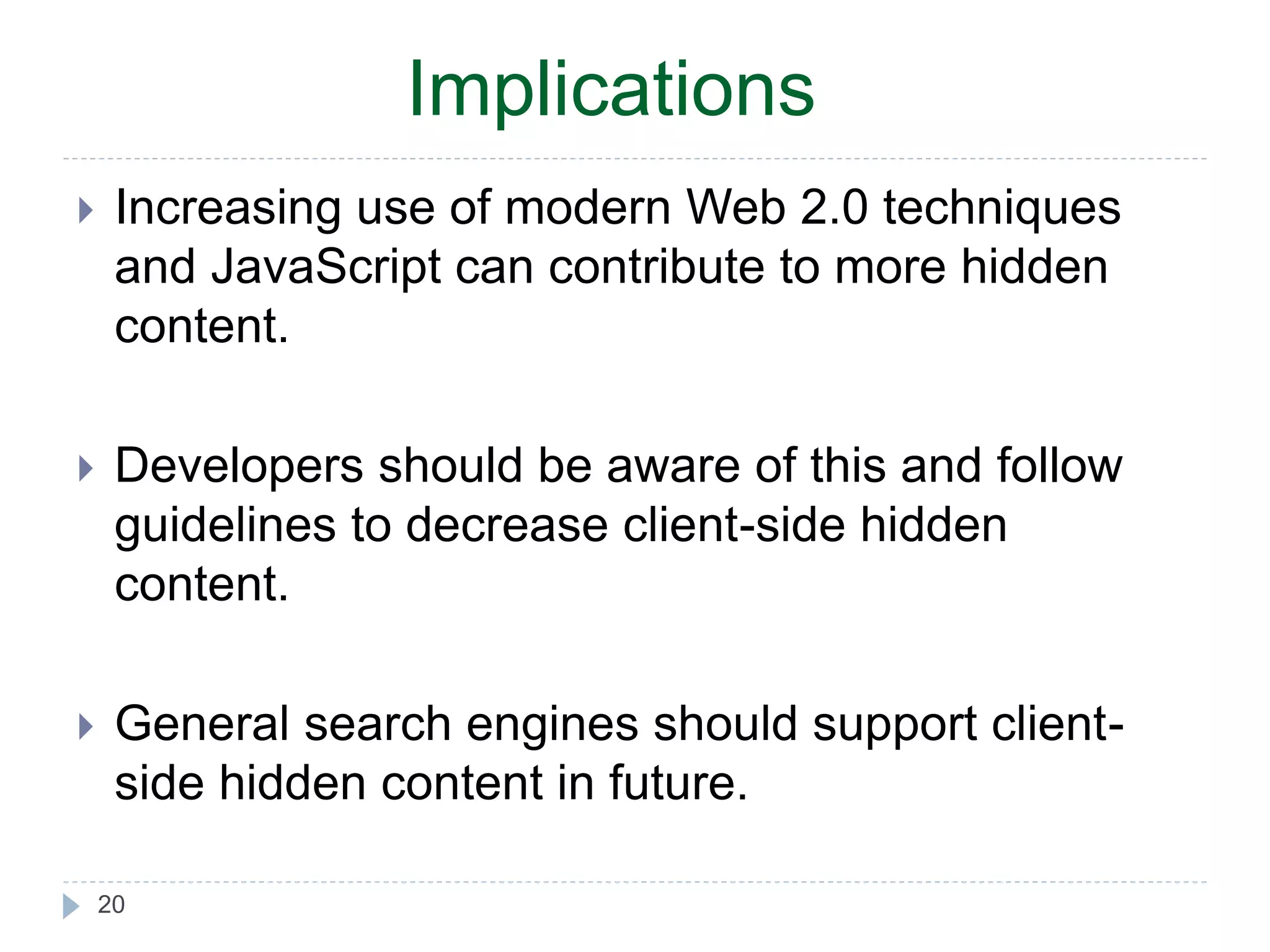The document presents the results of a study that measured the amount of hidden web content induced by client-side scripting on 500 popular websites: - 95% of the websites contained some degree of client-side hidden web content, with 62% of web page states being hidden on average. - On average, each hidden state contained 19 kilobytes of data, of which 0.6 kilobytes was textual content. - The <div> element was the most commonly used clickable element contributing to hidden content, present in 61% of cases. - It took 25 minutes on average to dynamically crawl and analyze 50 DOM states across the 500 websites using a crawling tool developed by the researchers.
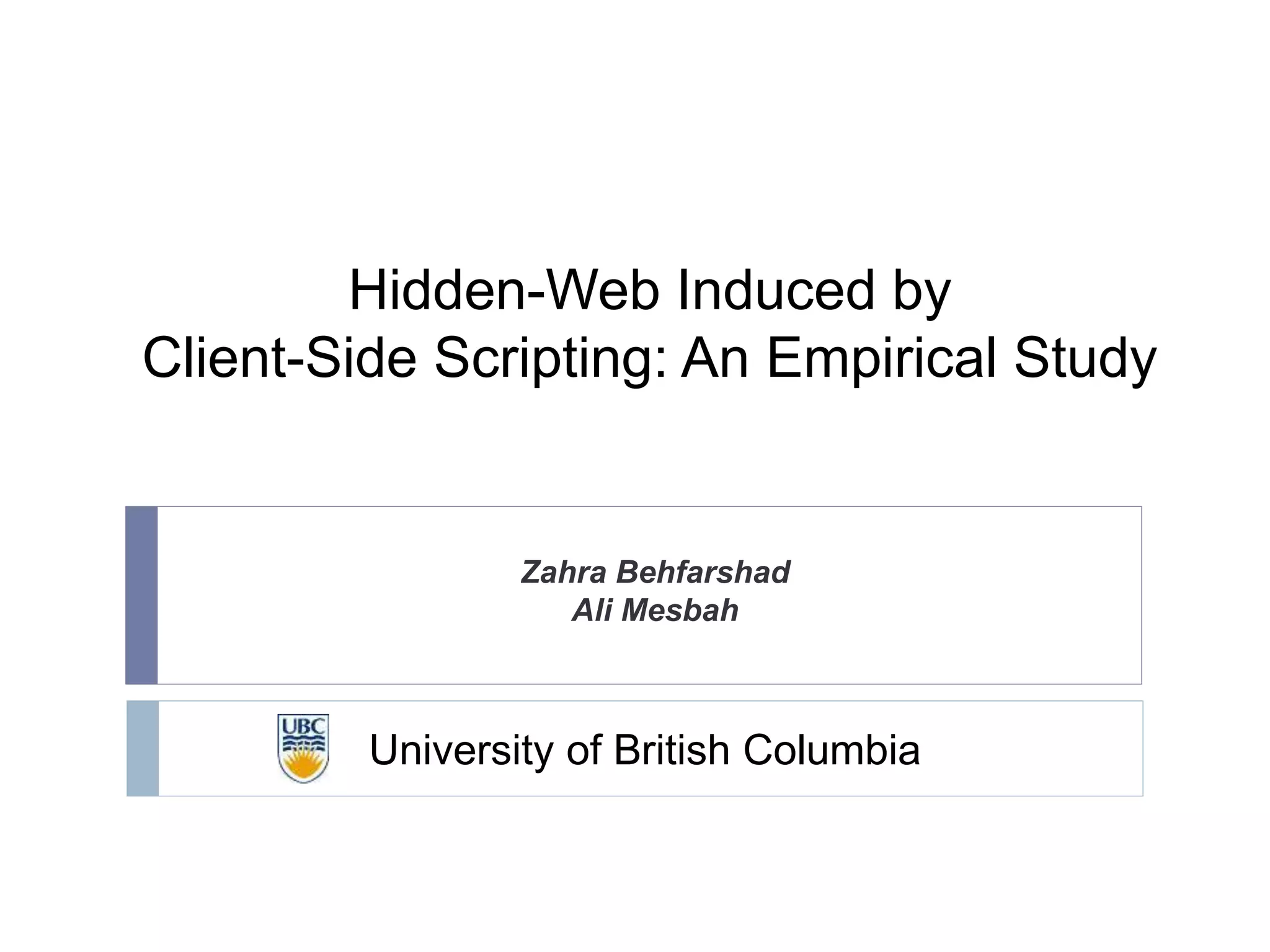
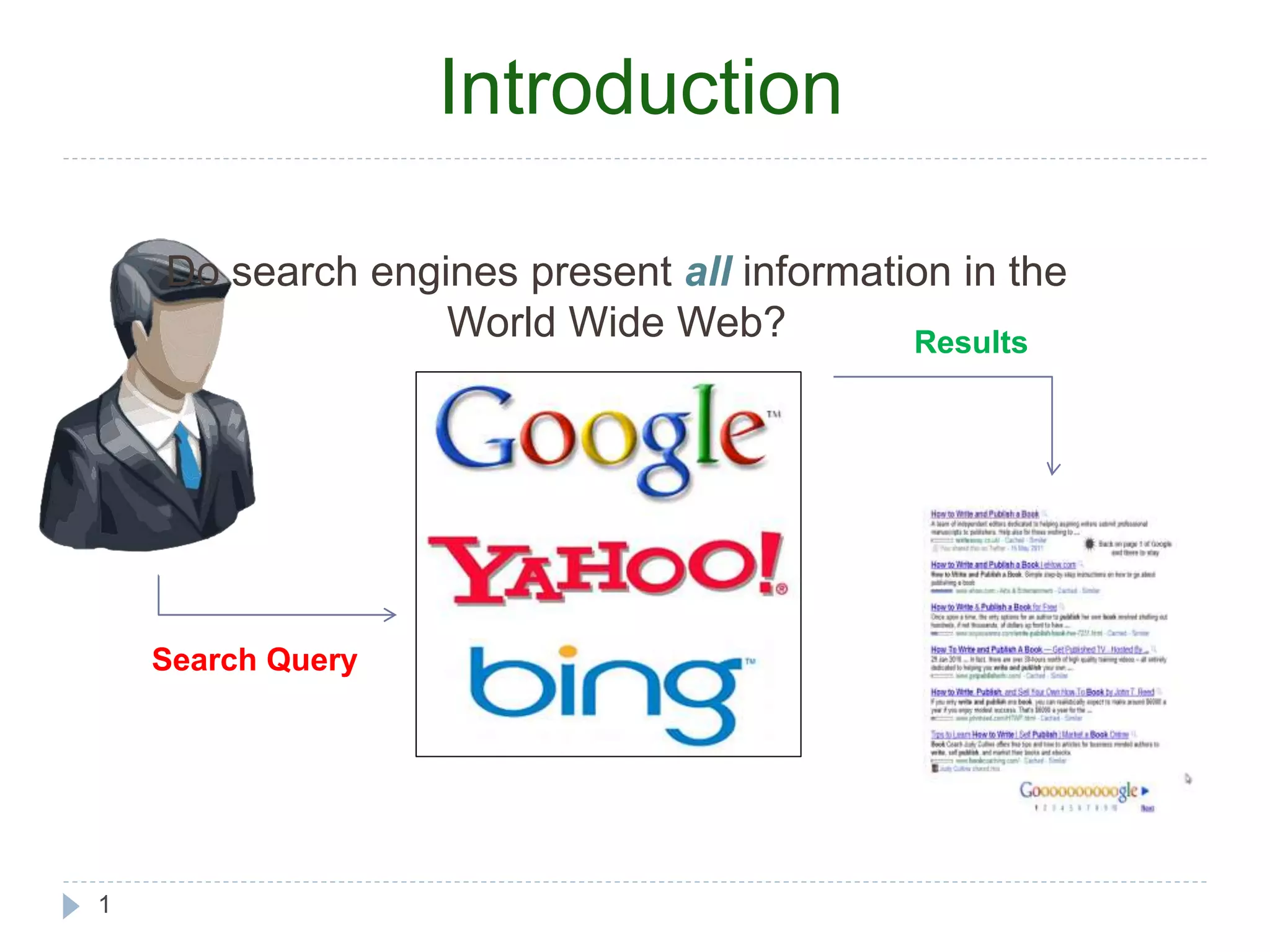
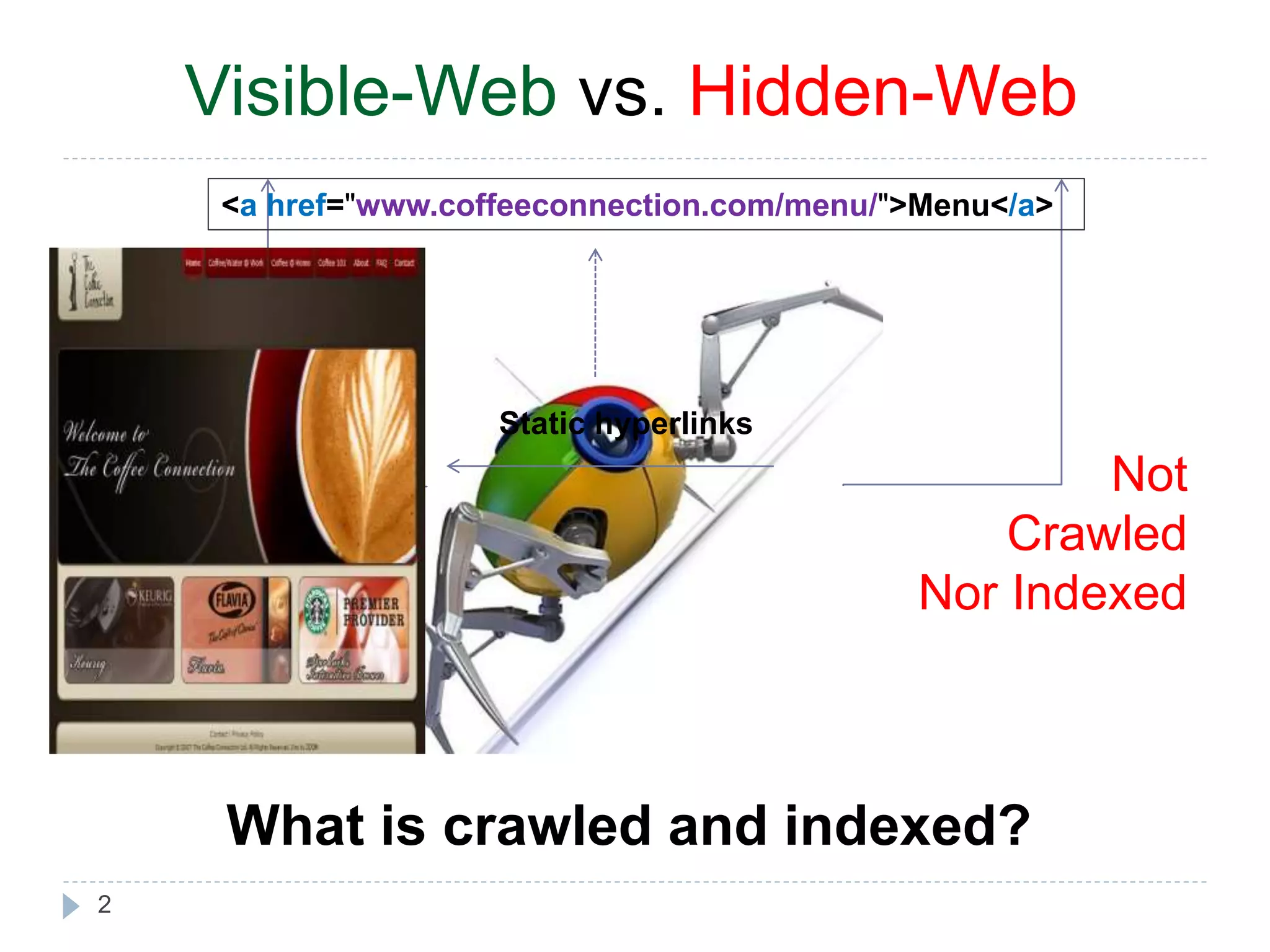
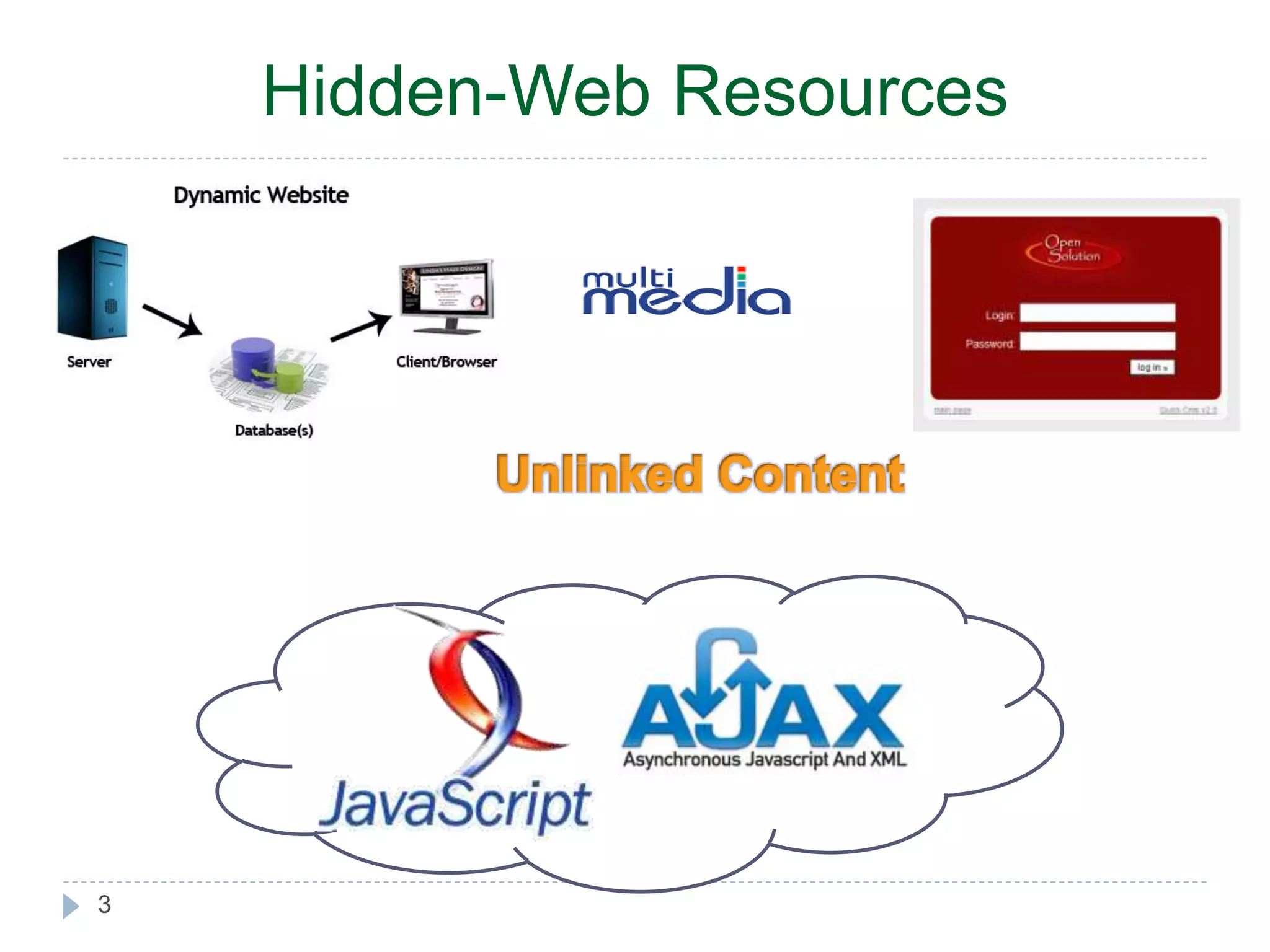


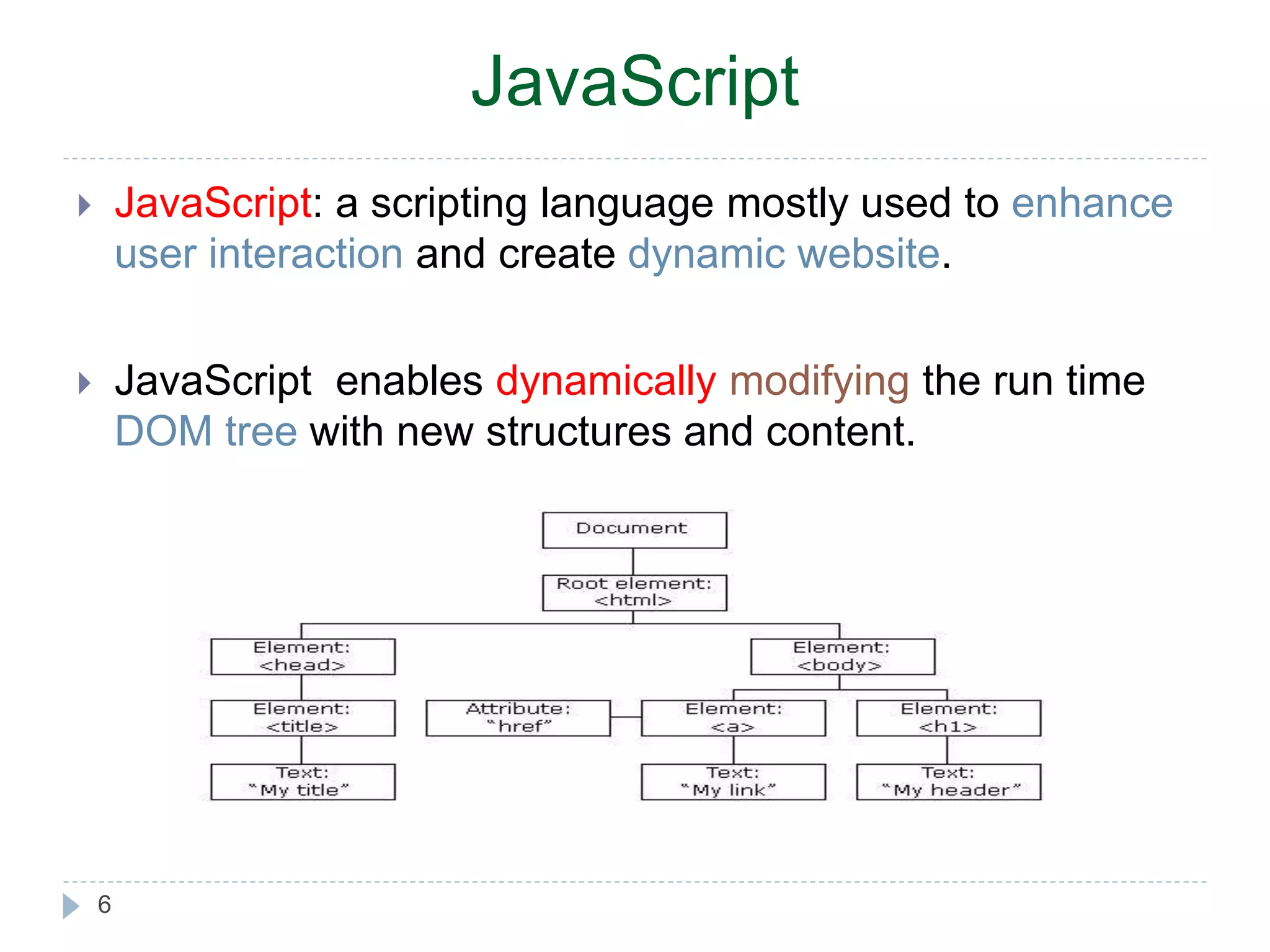
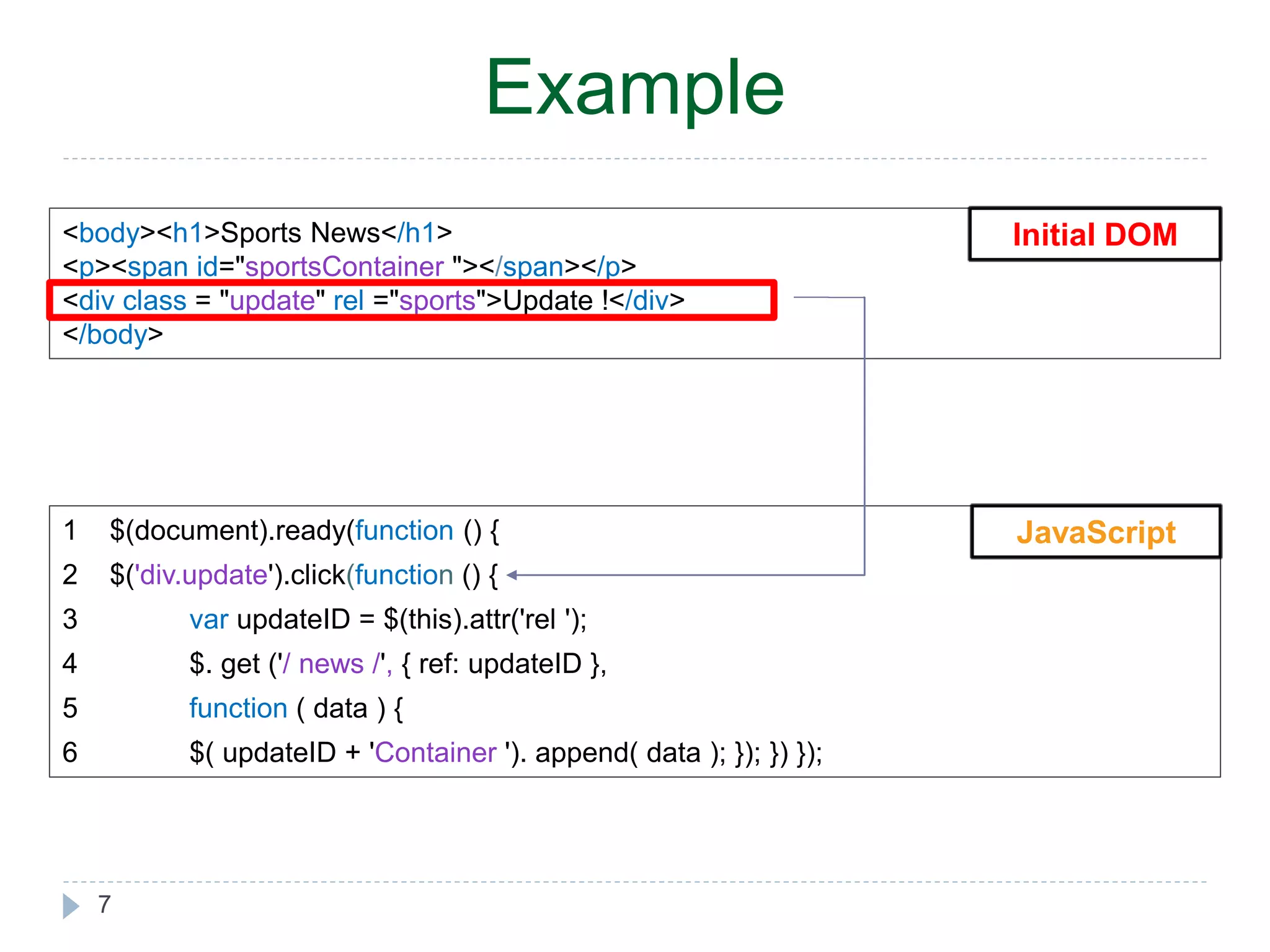
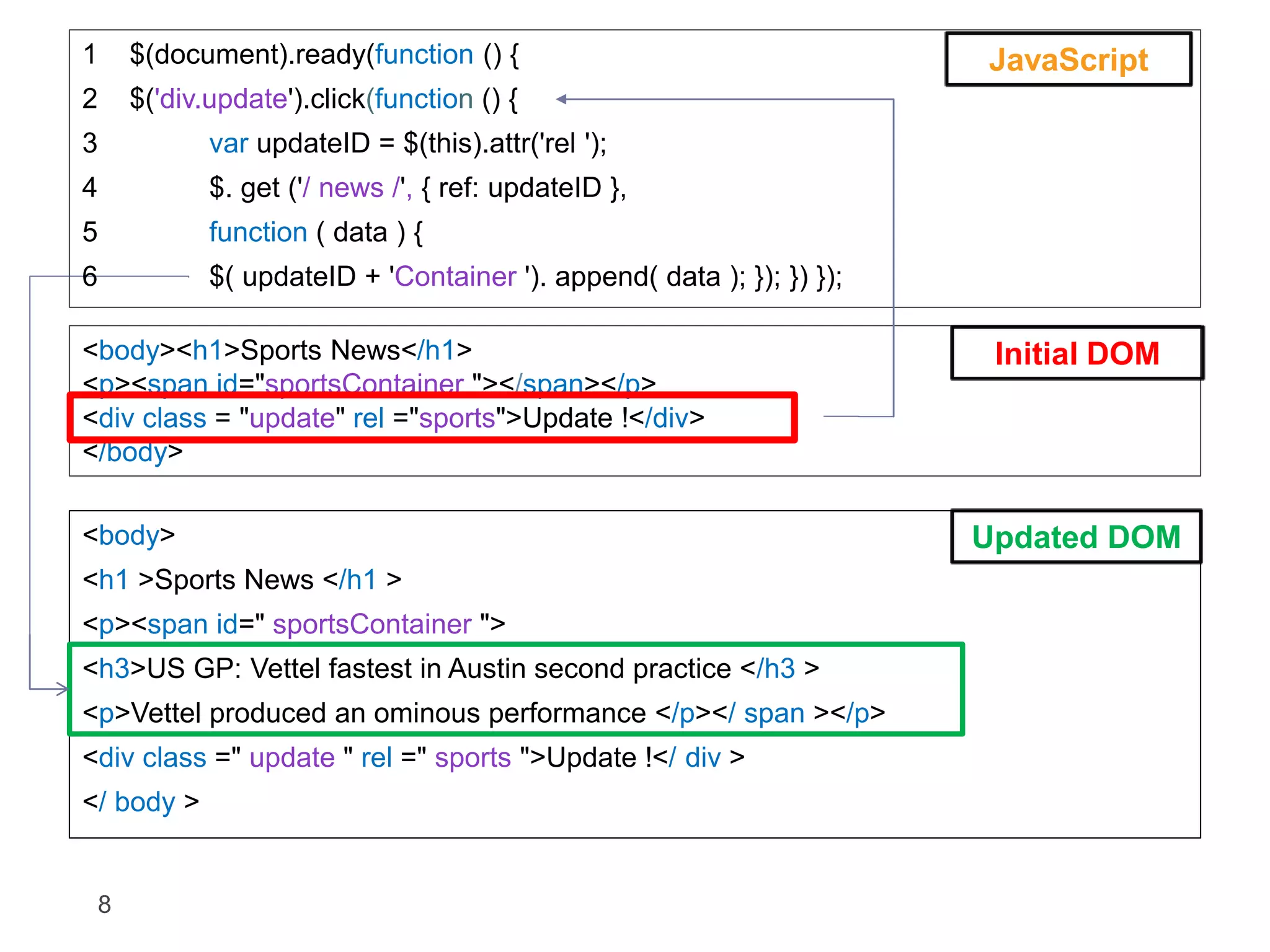

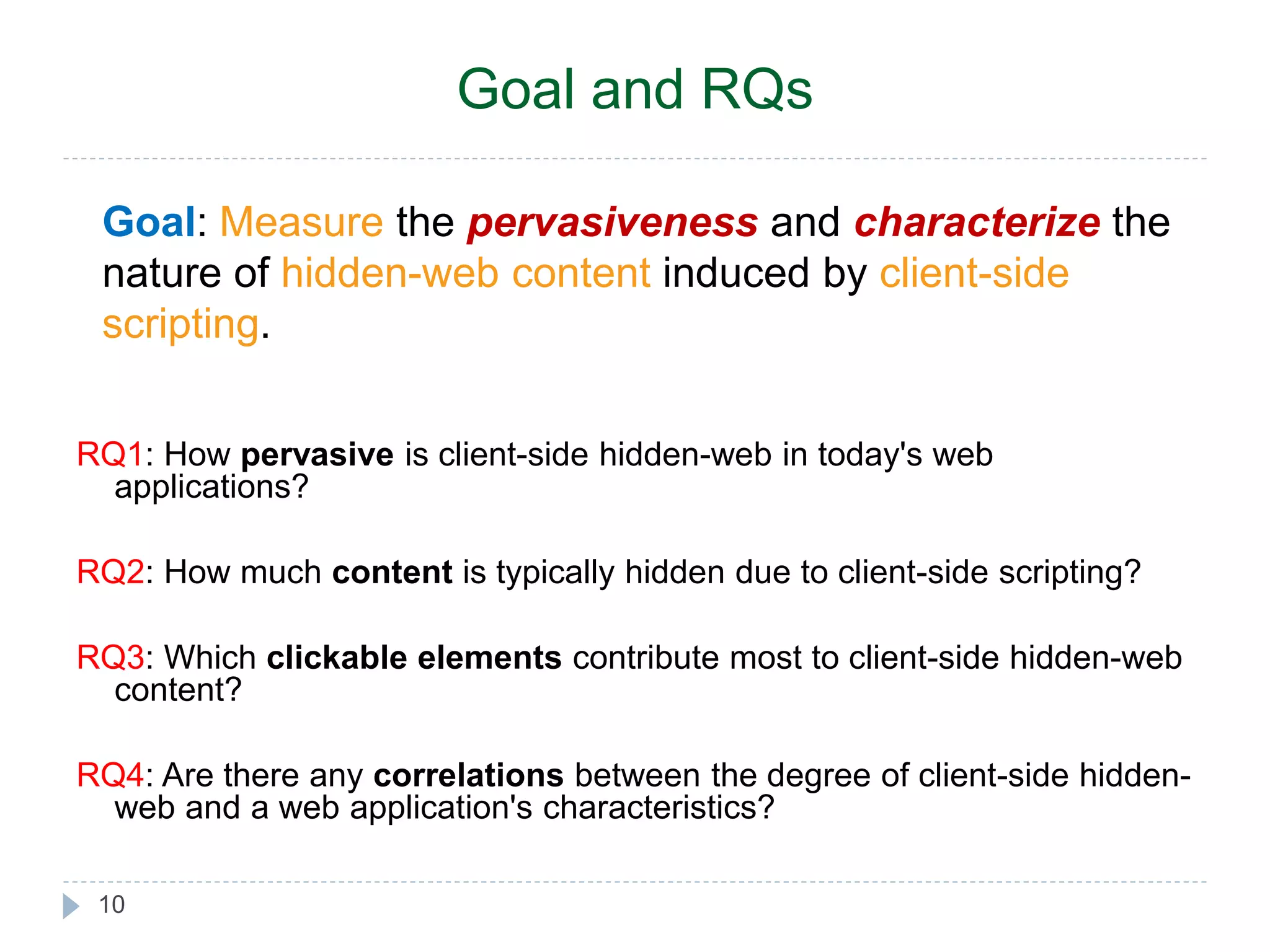
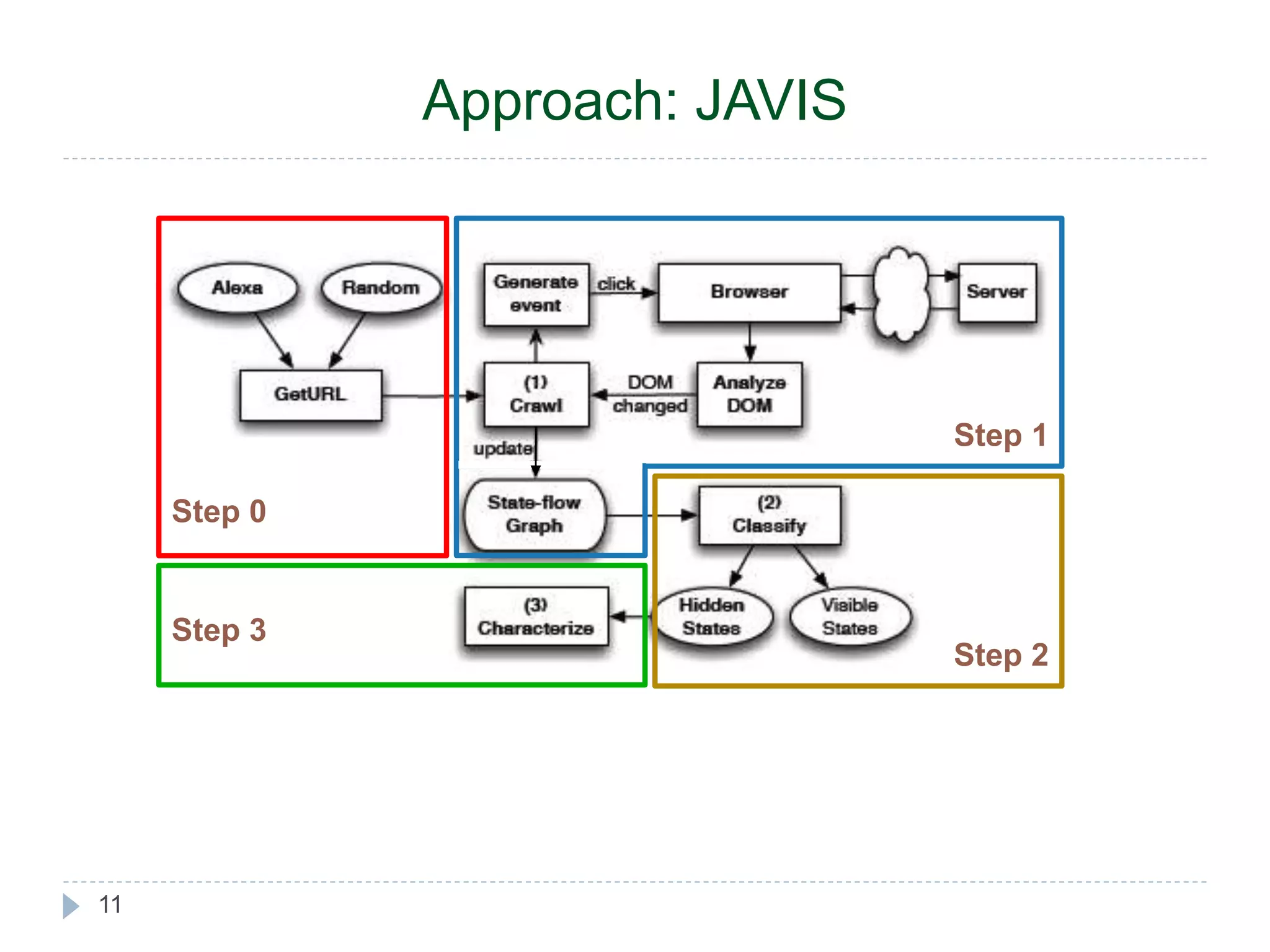
![ Javis: open source (http://github.com/saltlab/javis) Java Crawljax (crawljax.com) [Mesbah TWEB’12] Automatically explores JavaScript-based Ajax applications through event-driven dynamic crawling engine. 12 Tool Implementation](https://image.slidesharecdn.com/icwepresentationfinal-141026010302-conversion-gate01/75/Hidden-Web-Induced-by-Client-Side-Scripting-An-Empirical-Study-13-2048.jpg)
